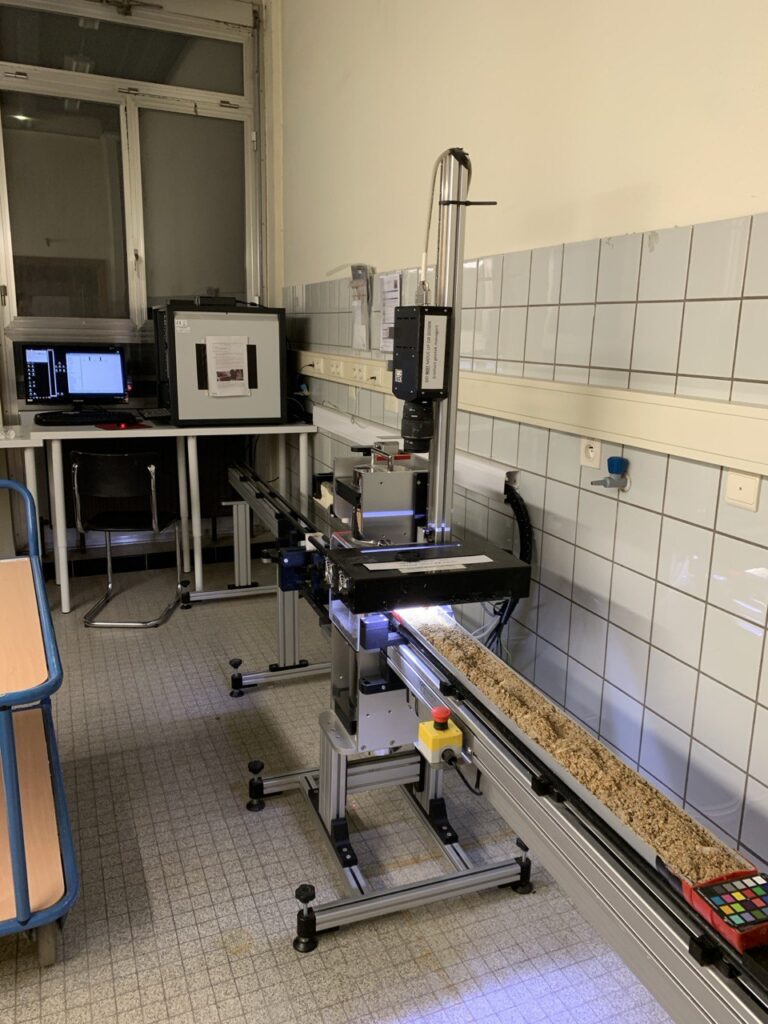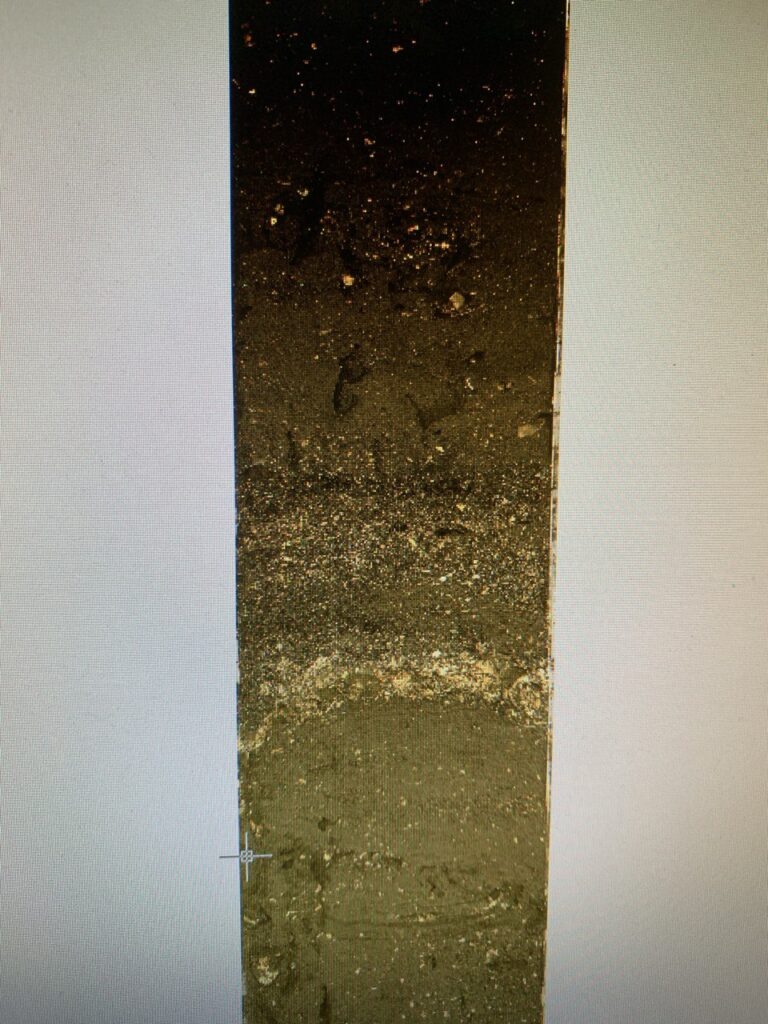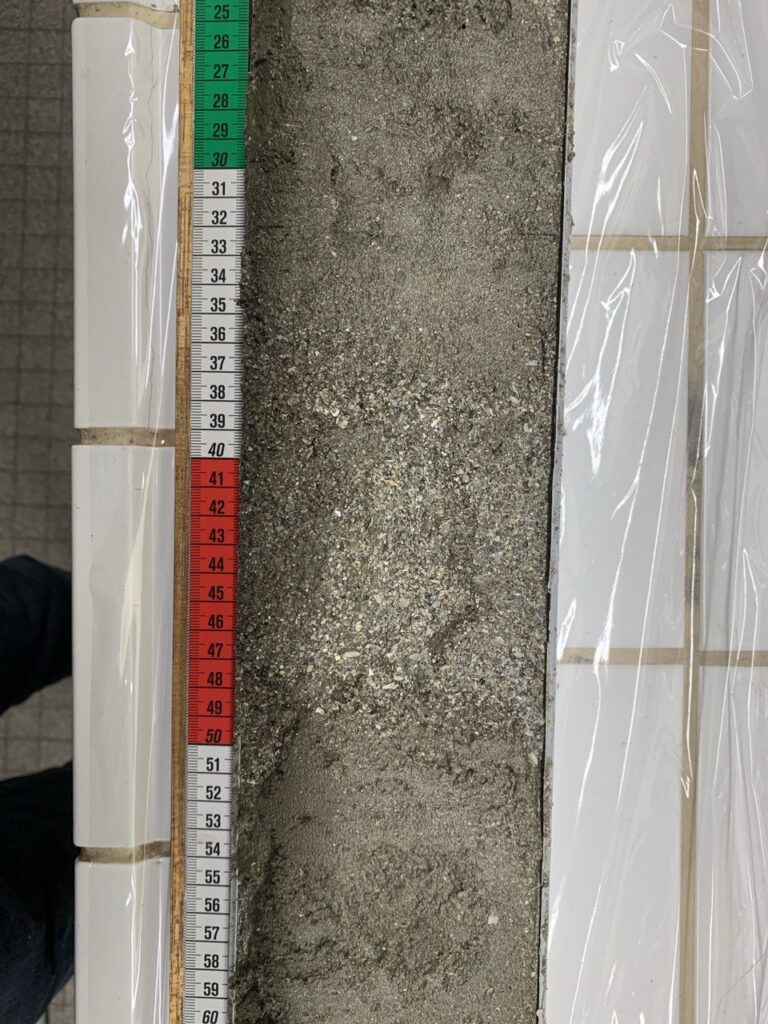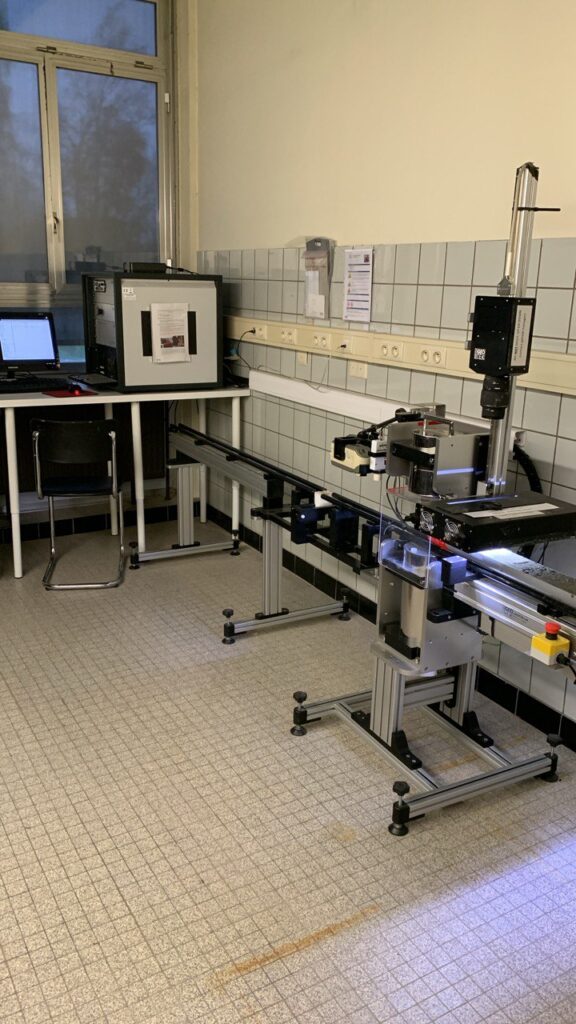As part of the NORSEAT Project’s comprehensive approach to sediment analysis, our team conducted Multisensor Core Logging (MSCL) to capture key physical properties of our sediment cores. This method provides high-resolution insights into the internal variability of sediments, contributing to a deeper understanding of depositional environments and event layers such as palaeotsunami deposits.
What is MSCL?
The Multisensor Core Logger (MSCL) is an automated, non-destructive system that scans whole sediment cores to collect multiple data types simultaneously. During this session, we measured:
- Magnetic susceptibility – to detect variations in mineral content,
- Bulk density – to assess compaction and grain arrangement,
- And performed high-resolution photoscanning – for visual core documentation and sedimentary structure identification.
Capturing Data in Detail
The MSCL system provided continuous profiles along the core length, allowing us to:
- Identify event layers or abrupt environmental changes,
- Correlate physical properties with geochemical and microfossil data,
- And generate visual core logs that are essential for both interpretation and publication.
The high-resolution photoscan is especially valuable for documenting subtle sedimentary features such as laminations, grading, and color variations.




Why It Matters
Physical property measurements are a foundational dataset in stratigraphic studies. Within the NORSEAT Project, MSCL data helps us:
- Cross-validate sedimentological and geochemical analyses,
- Detect potential tsunami or storm deposits,
- And build a multi-proxy framework for Holocene palaeoenvironmental reconstructions in the Shetland offshore zone.
This method is another key step in our mission to uncover the history of coastal change and natural hazards in the North Sea. Stay tuned as we combine this dataset with seismic, geochemical, and biological indicators to build a fuller picture of the past.